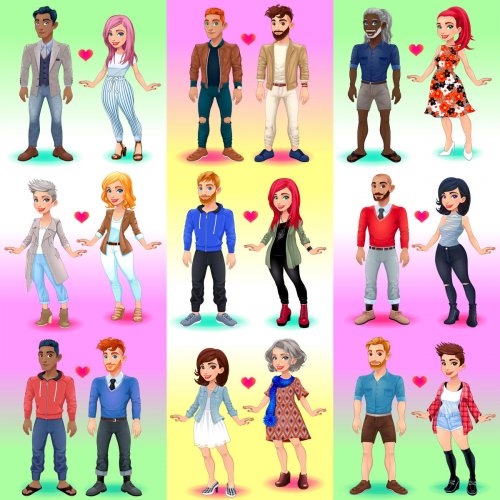 " title="What are some of the various gender identities?
" decoding="async" />
" title="What are some of the various gender identities?
" decoding="async" />Gender is distinct from sex. Although a person’s sex is largely determined by genetic causes, gender relates to how they identify on the inside. Only the individual may establish their gender identification. This page will define gender identity, define different gender identities, and explore where people can receive help. It will also investigate how gender occurs on a scale.
Table of Contents
What exactly is gender identity?
Gender identity refers to an individual’s perception of his or her gender. Because a person’s sex and gender identity do not have to be the same, it is critical to understand the distinction.
Gender
Gender is how a person identifies inside and expresses this externally. People can show their gender identity through dress, looks, and behavior. Gender is a social construction that individuals often describe in terms of femininity and masculinity, according to the World Health Organization (WHO). In Western countries, femininity is associated with women and masculinity with males, yet this social construction differs between cultures. Gender, on the other hand, is not neatly split along the binary lines of “man” and “woman.”
Sex
A person’s sex is usually determined by biological elements such as reproductive organs, DNA, and hormones. Sex, like gender, is not binary. A person may have the genes associated with being male or female, yet their reproductive organs, genitals, or both may appear different. This is referred to as sex development differences. Intersex is another term for variances in sex development. To describe a person’s sex, the phrases “male,” “female,” or “intersex” are commonly used.
Learn more about the distinction between sex and gender.
What is the background of gender identity?
As our perceptions of gender change, so do the notions and phrases that allude to it. The phrase “gender identity” first appeared in print in the 1960s. It referred to a person’s inner sense of belonging to the male or female gender categories. People who identify in other ways were eventually included in the phrase. It refers to a person’s perception of gender, independent of the sex given to them by a doctor at birth. Some terminology, such as “transsexual,” have evolved. Previously, this phrase solely applied to those who had undergone certain medical procedures, such as a mastectomy or phalloplasty. This term’s definition has been expanded to include persons who are on the move toward or possess a gender identification other than the one allocated to them at birth.
Other languages’ acceptability has shifted. Historically, the term “queer” was used as a derogatory epithet for those who did not adhere to gender expression or identity norms. Some individuals have now recovered it. It can be acceptable in some situations but offensive if used incorrectly.
It is also crucial to understand that gender identity may not be classified. Labels can help people understand who they are, but gender identities are not always classifiable in these ways. As people come to understand their gender identity in new ways, they may discover that no single label adequately describes it. Alternatively, people may identify in a variety of ways.
The spectrum and gender identity
Gender identity is not limited to being either a man or a woman. Some people identify as neither male nor female, while others identify as both.
Gender identification
This word relates to an individual’s concept of gender.
Some people identify as male, while others as female. Others might identify as neither, both, or somewhere in the middle.
Gender identity and presentation
This is how a person communicates themselves to others and how they want the rest of the world to perceive them. A person can present as entirely masculine or entirely feminine. A person may also present as androgynous or nonbinary. Mannerisms, clothing styles, names, and pronoun choices, to name a few aspects of gender expression and presentation.
What are some examples of various gender identities?
The following are some definitions of gender identities.
Agender
A person who is agender does not identify with any one gender and may have no gender at all.
Other terms for this could be:
Neutral gender, genderless neutrois, androgyne
A person who identifies as androgyne has a gender that is either both masculine and feminine or somewhere between the two.

Bigender
A bigender person is a person who has two genders.
Bigender people frequently exhibit cultural masculine and feminine roles.
Butch
Women, particularly lesbians, frequently use this phrase to describe how they display masculinity or what society considers masculine.
However, according to the LGBTQIA Resource Center, “butch” can also be a gender identity in itself.
Cisgender
A cisgender person identifies with the sex assigned to them at birth. A cisgender woman, for example, is someone who still identifies with the sex — female in this case — assigned to them by a doctor at birth.
Gender diversity
Gender expansive is defined as an “umbrella word used for persons who widen their own culture’s commonly held concepts of gender, including expectations for its expression, identities, roles, and/or other perceived gender norms” by the LGBTQIA Resource Center. Persons who are gender expansive include transgender those and people whose gender expands the sense of gender in the surrounding society.
Genderfluid
A genderfluid individual has a gender identity and presentation that varies between or outside of society’s expectations of gender.
Gender discrimination
A person who identifies as a gender outlaw refuses to be defined by society’s notion of “male” or “female.”
Genderqueer people have a gender identity or expression that differs from society’s expectations for their assigned sex or assumed gender.
Genderqueer can also refer to someone who identifies in ways other than how society defines gender or someone who identifies with many genders.
Centered Masculine
A person who utilizes this word is usually a lesbian or a trans person who prefers masculine gender acts and experiences.
Nonbinary
A nonbinary individual does not experience gender inside the gender binary.
